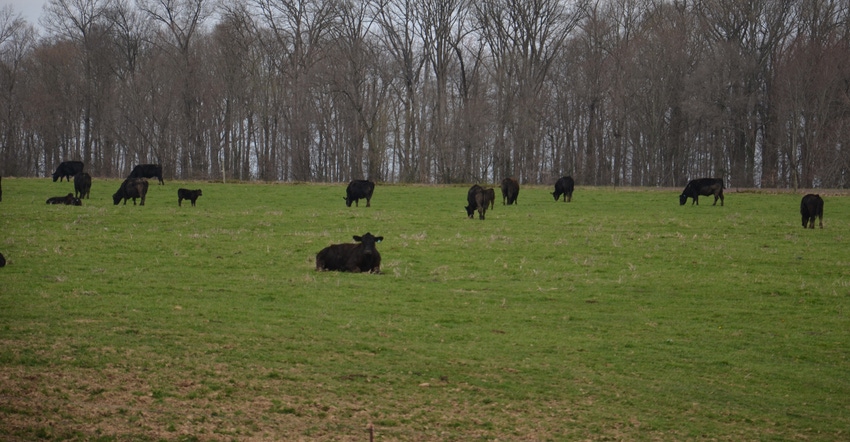July 17, 2020

Editor’s note: Victor Shelton is the state agronomist and grazing specialist for the Natural Resources Conservation Service. This article was adapted from the 150th edition of his newsletter, Grazing Bites. Check out the newsletter and more information about grazing management.
Livestock producers who graze cattle on pasture ask some of the same questions every year. Here are the questions I get most often, followed by my answers:
Can I broadcast or interseed grass seed to improve the stand? That depends. In most cases, seeding grasses into existing stands of perennial grasses is not successful. Existing forage provides too much competition for new seedlings.
There are exceptions. Drilling something like orchardgrass into a failing alfalfa field is almost always successful if soil conditions are good, especially in late summer. Annual ryegrass can often be seeded into thin pastures during late winter and do quite well while providing some extra forage and ground cover. Oftentimes, timothy can be seeded during the winter dormant period, especially into thin pastures.
Otherwise, the effort is often in vain, and you would be better off completely starting over with the stand. Always start with a soil test.
What can I plant that livestock won’t eat into the ground? I would like to respond, “Have you considered green outdoor carpeting?” This question usually comes from cases of severe overgrazing. The problem is most likely due to either not enough pasture for the number of livestock, long-term continuous grazing with too many livestock, or it’s being treated more like a drylot than a pasture.
Forages require rest. They can only provide so much, which is why we seriously need to constantly evaluate our animal-to-forage balance and understand that what the pasture doesn’t provide, we will have to carry to them one way or another.
How many cows can I graze per acre? If you’re talking about stock density, then you’re talking about pounds of animal live weight per grazing event for an acre allotment. That number can be very high. I’ve seen it over 500,000 pounds per acre, but that was also for only a 12-hour time frame and should have been a bit shorter than that.
If what you really want to know is how many acres you need to support one cow for the grazing season or the year, including hay from it, then on average, you need about 2.5 acres per animal unit. An animal unit is 1,000 pounds live weight, so a 1,200-pound cow is 1.2 animal units, and will need about 3 acres, on average, to meet her dry matter needs.
What is the No. 1 pasture management practice? Is this purely about pasture management, or is it more of a soil fertility question? One of the best things you can do is to be very diligent about maintaining stop-grazing heights. This is the shortest vegetation present, not the tallest, so the average height is probably more! By maintaining this residual growth, you maintain good soil cover, keeping the soil cooler and reducing runoff and evaporation. It also supports good rest and recovery, and thus regrowth, yield and animal intake. It is also beneficial for root growth, maintaining and improving soil organic matter, nutrient recycling, and overall soil health.
If the question is about soil fertility, I still believe in starting with a soil test for baseline information, with pH being the first thing to check. If the pH is off too much, nutrients will often be deficient or misinterpreted. Adjust the pH to shoot toward neutral. Give it time to adjust and then resample for nutrients.
Why are pastures so weedy? Without seeing the site and management, this is a hard question to answer. Minimizing soil disturbance and maintaining good soil cover is always a good place to start to prevent or keep weeds in check. When there is good vegetative cover and the soil surface is protected, there is less opportunity for weed seeds to germinate. If you leave cows in a spot too long, especially combined with a heavy rain event, you open the sod for opportunist weeds.
The threshold of how many weeds are too many is certainly different from person to person. My threshold is 30% canopy. When weeds start occupying 30% of the canopy, intervention is needed because they’re robbing sunlight from desirable forages. Weeds that are noxious or very invasive should also be kept from going to seed.
You May Also Like




